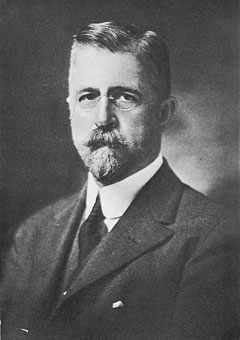Homer Hulbert changed Korea’s education system forever

Homer Bezaleel Hulbert incited a revolutionary shift to the Korean education system through multiple innovative accomplishments just after two years of his stay in Korea.
One of Hulbert’s most notable accomplishments was SaMinPilJi (사민필지), translated to ‘Knowledge Necessary For All.’
The textbook was the first modern-style text available to Koreans, who largely depended on Chinese culture and ideologies for their education.
SaMinPilJi’s content revolved around modern, western perspectives, which presented a new vision of the world for the future generations of Korea.
Hulbert’s achievements did not end there as he was not only interested in pure education but also the cultural aspects of Korea.
Accordingly, Hulbert published Western Style Music scores of the most famous Korean folk song, ‘Arirang,’ which still lives on in the Korean school curriculum.
Considering that ‘Arirang’ has been passed down through generations without being imprinted on a decent music score, Hulbert's efforts to modernize the methods were considered revolutionary.
In his efforts to modernize and globalize Korean culture, Hulbert also gained insight into Korea’s pure history, culture, literature, and arts.
In an attempt to share the cultural talent of Koreans, Hulbert published an 800-page, two- volume book titled The History of Korea.
Such great accomplishment was only possible after his 15 years of in-depth studying of Korean history.
The book, available on an international level, disclosed the unlawful behaviors and treaties incited by Japanese efforts to take total control over the Korean peninsula.
Hulbert’s connection with the Korean language ‘Hangul’ was inevitably intimate after years of devoting his life to revitalizing the Korean culture and education system.
Through his in-depth research on Hangul, Hulbert revealed the efforts and skills required to create an entirely new language, highlighting King Sejong, who invented Hangul as ‘the most shining leader.’
Hulbert also valuedHangul’s origin and characteristics, labeling the language as ‘the finest alphabet in the world.’
In 1889, Hulbert announced the excellence of Hangeul to the international community through the American newspaper New York Tribune.
He then introduced 'Korean inventions' in Harper's New Monthly Magazine: movable metal type, turtle ship, suspension bridge, explosive bullets, and Hangul.
In 1903, he presented a thesis on the excellence of Hangul to the Smithsonian Institution in the United States.
He also contributed greatly to the return movement of the 10-story stone pagoda of Gyeongcheonsa Temple along with British journalist Bethel.
Today, the stone pagoda is proudly exhibited as a representative relic at the National Museum of Korea.
He actively objected to the writings of the American Greenpeace, such as ‘Joseon, a hermit country’ and ‘Korea, a dwarf empire,’
In opposition to the insulting claims, Hulbert emphasized that Joseon people began to accept the foreign culture.
Hulbert’s statement successfully appealed to the world.
It prevented any false perspectives that happened to perceive them as an uncivilized and inferior race.
Hulbert was proud of Korea's history and was more zealous than anyone else in promoting and protecting latent Korean culture to the world.
Although largely unknown and hidden behind Korea’s now prominent and popular culture, without Hulbert’s efforts to change Korea’s education system, Korea’s modernization would have been impossible.

- Keonhee Ahn / Grade 10
- Chadwick International School

![THE HERALD STUDENT REPORTERS [US]](/assets/images/logo_student_us.png)
![THE HERALD STUDENT REPORTERS [Canada]](/assets/images/logo_student_ca.png)
